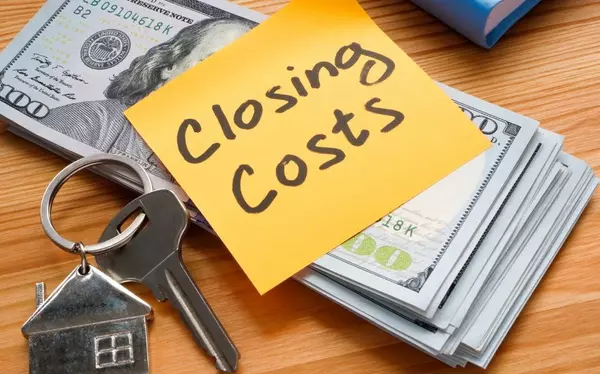How Transportation Options Influence Neighborhood Appeal

How Transportation Options Influence Neighborhood Appeal
Transportation options play a crucial role in shaping the appeal of a neighborhood, directly impacting daily life and long-term satisfaction for residents. Whether it’s access to efficient public transit, bike lanes, or proximity to major highways, a neighborhood’s transportation infrastructure can define how easily people move through their day. The ease of commuting often translates into better work-life balance, allowing residents to spend more time at home rather than on the road.
For many, choosing a neighborhood with reliable and convenient transportation is a top priority. Areas with well-connected public transportation or easy access to major roadways are often more desirable, especially for those with daily work commutes. Walkability and bike-friendly streets also contribute to a neighborhood’s charm, offering eco-friendly alternatives to driving.
Furthermore, transportation options can influence property values. Homes located near transit hubs, or in areas with shorter commutes, typically attract higher demand, making them more valuable in the real estate market. Overall, transportation accessibility is a key factor that influences not only the lifestyle of residents but also the long-term appeal and desirability of a neighborhood.
Key Takeaways
- Transportation Options & Neighborhood Appeal
Efficient public transit, bike lanes, and highway access significantly shape neighborhood appeal, offering better work-life balance and convenience for residents. - Types of Transportation
Public transit, walkability, biking infrastructure, road conditions, and ride-sharing services all play crucial roles in making a neighborhood desirable. - Commuting Time vs. Quality of Life
Shorter commute times lead to improved work-life balance and mental well-being, while long commutes can cause stress and negatively impact health. - Impact on Real Estate Values
Homes in neighborhoods with excellent transportation networks, such as public transit hubs or walkable areas, generally have higher demand and property values. - Eco-Friendly Transportation
The availability of electric vehicle (EV) infrastructure, bike lanes, and walkability appeals to eco-conscious buyers and can enhance a neighborhood's desirability. - Neighborhood Case Studies
Urban areas like Brooklyn Heights and suburban locales like Arlington, Virginia, showcase the importance of diverse and efficient transportation networks in boosting property values. - Homebuyer Tips on Commute
When evaluating a home, consider public transit access, road infrastructure, walkability, and tools like Google Maps to gauge commute times effectively.
Types of Transportation Options
The variety of transportation options in a neighborhood significantly impacts its overall appeal. Public transportation, such as subways, buses, and trains, offers reliable and efficient means for daily commuting. The availability of these services can greatly reduce travel time and stress, making neighborhoods with robust public transit systems highly desirable.
Walkability and bike lanes are also crucial factors. A high walk score indicates that essential services, shops, and recreational areas are within walking distance, promoting a healthier lifestyle. Bike-friendly areas provide safe routes for cyclists, encouraging more people to bike to work, which is both eco-friendly and cost-effective.
Car commuting and road infrastructure are important considerations for those who drive. Proximity to highways and the condition of local roads can affect commute times and convenience. Additionally, ample parking space is a significant factor for car owners, influencing their choice of neighborhood.
Ride-sharing and carpooling services, such as Uber, Lyft, and organized carpool networks, have become increasingly important. These options offer flexibility and convenience, especially in areas where public transit may not be as robust. The availability of these services adds a layer of convenience and can be a deciding factor for many when choosing a place to live.
Commuting Time vs. Quality of Life
The length of a daily commute can have a profound effect on overall quality of life. Shorter commute times are linked to better work-life balance, as less time spent traveling to and from work allows for more personal time. Whether it's spending extra moments with family, pursuing hobbies, or simply relaxing at home, the reduced stress of a short commute often results in a more satisfying lifestyle. People living in neighborhoods with efficient transportation options typically report higher levels of happiness and productivity.
On the other hand, long commutes can negatively impact mental and physical health. Extended hours spent in traffic or on crowded public transportation can lead to increased stress, fatigue, and even health issues like back pain or anxiety. Long commutes also eat into valuable personal time, leaving less room for socializing, exercise, or rest, ultimately diminishing life satisfaction.
As commuting times grow longer, individuals may experience a decline in their work performance and personal well-being. For these reasons, neighborhoods that offer easy access to workplaces or public transit options tend to be more attractive, as they directly support a healthier, more balanced lifestyle. Choosing a home with a shorter commute can greatly enhance day-to-day living.
Impact on Real Estate Values
Transportation options have a direct impact on real estate values, with areas offering superior accessibility often commanding higher home prices. Proximity to public transit hubs, such as subway stations, bus stops, or train lines, can significantly boost the appeal of a neighborhood. Homes located near these transit options are in high demand, particularly among professionals seeking easy commutes to work or access to city centers.
Walkable neighborhoods, with high walk scores, also tend to see a rise in property values. The ability to walk to grocery stores, restaurants, parks, and schools adds to the convenience and desirability of a location. As more people prioritize sustainability and active lifestyles, homes in bike-friendly and pedestrian-friendly areas become more attractive, often leading to increased competition in the real estate market.
For car commuters, neighborhoods with good road infrastructure and proximity to highways are similarly valued. These areas make driving convenient and can significantly cut down on commute times, increasing demand for homes.
As a result, areas with diverse transportation options, whether public transit or well-maintained roads, tend to experience steady growth in property values. For homebuyers, investing in neighborhoods with superior transportation access often provides long-term financial benefits.
Eco-Friendly Transportation & Appeal to Buyers
Eco-friendly transportation options are becoming increasingly attractive to homebuyers, especially those with a focus on sustainability. Green transportation solutions, such as electric vehicles (EVs), biking, and walking, not only reduce environmental impact but also enhance the appeal of neighborhoods offering these alternatives. The availability of EV charging stations, for instance, has become a sought-after feature, as more buyers transition to electric cars. Homes in areas that support electric vehicles are in higher demand, particularly among eco-conscious consumers.
Biking and walking are other sustainable commuting methods that are gaining popularity. Neighborhoods with well-maintained bike lanes and pedestrian-friendly pathways attract individuals who prefer to reduce their carbon footprint while enjoying a healthier lifestyle. As walkability becomes a priority for many, homes in these areas often see increased value and competition.
The trend toward sustainable commuting is also shaping urban planning. Many cities and suburbs are investing in green infrastructure, including bike-sharing programs, EV charging networks, and improved public transit that runs on renewable energy. This shift appeals to eco-minded buyers who prioritize both convenience and environmental responsibility. As a result, neighborhoods that embrace sustainable transportation solutions are becoming more desirable in the real estate market.
Neighborhoods with Excellent Transportation Networks
Transportation networks can dramatically influence the desirability of both urban and suburban neighborhoods. In urban areas, neighborhoods like Brooklyn Heights in New York City are highly sought after due to their excellent access to public transit. With multiple subway lines, buses, and ferry services, residents can easily commute to Manhattan and other parts of the city. This convenience contributes to high property values and strong demand among professionals seeking shorter commute times.
In contrast, suburban areas like Arlington, Virginia, offer a mix of public transportation and road infrastructure that makes commuting to nearby Washington, D.C., easy. Arlington’s extensive bus network, proximity to major highways, and access to the Metro system make it a desirable location for those who prefer suburban living without sacrificing access to the city. Its walkable streets and bike lanes further enhance its appeal to eco-conscious homebuyers.
When comparing neighborhoods with varying commuting options, those with superior transportation networks tend to see higher real estate demand and growth. Suburban areas lacking public transit may rely more on car commuting, which can lengthen travel times and reduce appeal. Ultimately, neighborhoods that offer diverse and efficient commuting options, whether urban or suburban, are more likely to attract buyers and maintain strong property values.
Tips for Homebuyers Considering Commute
When buying a home, evaluating the commute is crucial to ensure the neighborhood fits your lifestyle. Among the first things to find out is what kind of transportation options are there.Find out if there are any public transportation options nearby, such as trains, buses, or subways. If you plan to drive, assess the proximity to highways and the condition of the local road infrastructure.
Another important consideration is the neighborhood’s walkability and bike-friendliness. Check if you can walk or bike to essential places like grocery stores, schools, or workplaces. For eco-conscious buyers, it's worth asking about electric vehicle (EV) charging stations or ride-sharing services like Uber and Lyft.
To accurately gauge commute times, tools like Google Maps or transportation apps are incredibly helpful. By inputting your home and work addresses, you can get real-time estimates of commute duration based on different transportation modes, including driving, biking, walking, or public transit. Apps like Waze or Citymapper provide additional details, including traffic patterns or train schedules, helping you make an informed decision.
Ultimately, understanding your commuting needs and evaluating transportation options can save time and reduce stress, making a neighborhood more appealing in the long run.
Conclusion
Transportation is a critical factor in determining a neighborhood’s overall appeal. The availability of efficient and diverse commuting options—whether through public transit, walkability, biking infrastructure, or road access—can significantly impact daily life and long-term satisfaction. Neighborhoods with robust transportation networks tend to attract homebuyers looking for convenience, shorter commute times, and a better work-life balance.
Additionally, transportation options can directly influence real estate values. Homes near transit hubs, walkable areas, or neighborhoods that offer eco-friendly commuting solutions often see higher demand and property appreciation. On the flip side, areas with limited transportation can lead to longer, more stressful commutes, ultimately affecting quality of life.
When choosing a place to live, it’s essential to evaluate your commuting needs. Consider the distance to work, the availability of public transit, and whether the neighborhood’s transportation options align with your lifestyle. Using tools like Google Maps or commuting apps can provide an accurate picture of travel times and routes, helping you make an informed decision.
Ultimately, taking commuting and transportation into account ensures you’ll find a neighborhood that not only meets your needs but also enhances your day-to-day living experience.
Categories
Recent Posts










